A Closer Look At Overdose Mortality Rate in West Virginia

West Virginia has a long-standing history with opioid use disorder. Since the 1990s, when much of the coal mining industry in the United States was suddenly unemployed, continued unemployment and painful physical ailments as a result of time spent mining have plagued the residents of this state.
This, combined with over-prescribed opioid medications, has led to the current crisis facing West Virginia as it is ranked one of the worst states in regards to “drug use, law enforcement involving drugs and drug health issues … ([where] Law enforcement includes the number of arrests, laws against drugs and laws requiring drug testing, not just police presence).”
This contributes highly to the overdose mortality rate and the desperate need for intervention in the state.
What does the mortality rate mean?
One of the key factors examined when discussing the opioid crisis is the mortality rate.
According to Merriam-Webster, mortality rate is defined as “the ratio between deaths and individuals in a specified population and during a particular period: the incidence of deaths in a given population during a defined period (such as one year) that is typically expressed per 1,000 or 100,000 individuals.”
In West Virginia, then, the mortality rate of overdose deaths is a measure of the number of deaths in the state from opioid overdose, and this number is high: “West Virginia was ranked highest for most overdose deaths per capita. The CDC predicted 1,515 deaths from overdose between July 2020 and July 2021 according to preliminary data in the National Vital Statistics System.”
Which drugs are responsible for these overdoses fluctuates over the years: “Fentanyl and fentanyl analogs were involved in 76 percent of all drug overdose deaths occurring in West Virginia in 2021, up from 58 percent in 2017. The proportion of drug overdose deaths involving heroin has declined over the 5 years, accounting for only three percent of drug overdose deaths in 2021 as compared to 26.3 percent in 2017. Methamphetamine-related deaths have increased substantially, accounting for 52.2 percent of drug overdose deaths in 2021 as compared to 22.8 percent in 2017.”
When looking at the numbers, it becomes clear that overdose mortality is not a small-scale issue, but a large problem threatening the lives of many families and individuals in more ways than just overdose fatalities.
The impact of West Virginia’s overdose rate
Addiction is not necessarily hereditary, although certain genes may predispose some individuals to developing an addiction over others. Many who seek addiction treatment open up about other challenges they face, including depression, anxiety, PTSD and bipolar disorder, which often leads them to unhealthy coping mechanisms like drug use.
For West Virginia residents with a history of unemployment, it is not uncommon to also experience chronic levels of stress anxiety and/or depression as a result of being unable to find work; additionally, chronic pain can significantly impact your life in negative ways, and if opioids are the only way to relieve that discomfort, they may be sought out more than is necessary.
As addiction builds, it becomes difficult to stop on your own, especially if the cravings are particularly strong, or the withdrawal symptoms you experience upon stopping are severe. This feeds the cycle of addiction which many adults find themselves battling.
Unfortunately, even though people may be aware they are struggling, they do little to seek the appropriate help they need. WV particularly is “one of five states with the fewest people receiving treatment for substance abuse, despite its high level of drug use.”
The impact stretches to children and families as well, where one in five children grow up in homes where parents abuse drugs or alcohol; not to mention the fact that West Virginia ranks highest in the states for children growing up in the homes of their grandparents as a result of the addiction problems of their parents.
How can we address the overdose issue?
To benefit the residents of West Virginia and slowly begin to heal the state and its residents, several strategies need to be utilized, including limiting the number of prescription opioids being filled. But this isn’t necessarily something you have control over, so what can you, in your daily life, do to prevent opioid overdose?
- Educate yourself – Take the time to learn the signs of opioid use disorder (OUD) to be better equipped to identify OUD and recommend the proper help
- Talk about treatment and therapy to help reduce the stigma surrounding getting important, life-saving help;
- Look up resources, including addiction treatment centers in WV, so that you can point struggling loved ones in the right direction
- Take a look at your own life and decide whether you may be a good candidate for opioid addiction treatment;
- Reach out to friends and family if you are concerned for yourself, and tap into their support as you pursue recovery
In addition, don’t hesitate to contact a clinic near you for addiction help at any time. At Pyramid Healthcare, we strive to offer round-the-clock support to all individuals seeking addiction recovery.
To learn more about our programs, contact us online or call our offices anytime at 888-461-7426.
West Virginia has a long-standing history with opioid use disorder. Since the 1990s, when much of the coal mining industry in the United States was suddenly unemployed, continued unemployment and painful physical ailments as a result of time spent mining have plagued the residents of this state.
This, combined with over-prescribed opioid medications, has led to the current crisis facing West Virginia as it is ranked one of the worst states in regards to “drug use, law enforcement involving drugs and drug health issues … ([where] Law enforcement includes the number of arrests, laws against drugs and laws requiring drug testing, not just police presence).”
This contributes highly to the overdose mortality rate and the desperate need for intervention in the state.
What does the mortality rate mean?
One of the key factors examined when discussing the opioid crisis is the mortality rate.
According to Merriam-Webster, mortality rate is defined as “the ratio between deaths and individuals in a specified population and during a particular period: the incidence of deaths in a given population during a defined period (such as one year) that is typically expressed per 1,000 or 100,000 individuals.”
In West Virginia, then, the mortality rate of overdose deaths is a measure of the number of deaths in the state from opioid overdose, and this number is high: “West Virginia was ranked highest for most overdose deaths per capita. The CDC predicted 1,515 deaths from overdose between July 2020 and July 2021 according to preliminary data in the National Vital Statistics System.”
Which drugs are responsible for these overdoses fluctuates over the years: “Fentanyl and fentanyl analogs were involved in 76 percent of all drug overdose deaths occurring in West Virginia in 2021, up from 58 percent in 2017. The proportion of drug overdose deaths involving heroin has declined over the 5 years, accounting for only three percent of drug overdose deaths in 2021 as compared to 26.3 percent in 2017. Methamphetamine-related deaths have increased substantially, accounting for 52.2 percent of drug overdose deaths in 2021 as compared to 22.8 percent in 2017.”
When looking at the numbers, it becomes clear that overdose mortality is not a small-scale issue, but a large problem threatening the lives of many families and individuals in more ways than just overdose fatalities.
The impact of West Virginia’s overdose rate
Addiction is not necessarily hereditary, although certain genes may predispose some individuals to developing an addiction over others. Many who seek addiction treatment open up about other challenges they face, including depression, anxiety, PTSD and bipolar disorder, which often leads them to unhealthy coping mechanisms like drug use.
For West Virginia residents with a history of unemployment, it is not uncommon to also experience chronic levels of stress anxiety and/or depression as a result of being unable to find work; additionally, chronic pain can significantly impact your life in negative ways, and if opioids are the only way to relieve that discomfort, they may be sought out more than is necessary.
As addiction builds, it becomes difficult to stop on your own, especially if the cravings are particularly strong, or the withdrawal symptoms you experience upon stopping are severe. This feeds the cycle of addiction which many adults find themselves battling.
Unfortunately, even though people may be aware they are struggling, they do little to seek the appropriate help they need. WV particularly is “one of five states with the fewest people receiving treatment for substance abuse, despite its high level of drug use.”
The impact stretches to children and families as well, where one in five children grow up in homes where parents abuse drugs or alcohol; not to mention the fact that West Virginia ranks highest in the states for children growing up in the homes of their grandparents as a result of the addiction problems of their parents.
How can we address the overdose issue?
To benefit the residents of West Virginia and slowly begin to heal the state and its residents, several strategies need to be utilized, including limiting the number of prescription opioids being filled. But this isn’t necessarily something you have control over, so what can you, in your daily life, do to prevent opioid overdose?
- Educate yourself – Take the time to learn the signs of opioid use disorder (OUD) to be better equipped to identify OUD and recommend the proper help
- Talk about treatment and therapy to help reduce the stigma surrounding getting important, life-saving help;
- Look up resources, including addiction treatment centers in WV, so that you can point struggling loved ones in the right direction
- Take a look at your own life and decide whether you may be a good candidate for opioid addiction treatment;
- Reach out to friends and family if you are concerned for yourself, and tap into their support as you pursue recovery
In addition, don’t hesitate to contact a clinic near you for addiction help at any time. At Pyramid Healthcare, we strive to offer round-the-clock support to all individuals seeking addiction recovery.
To learn more about our programs, contact us online or call our offices anytime at 888-461-7426.










